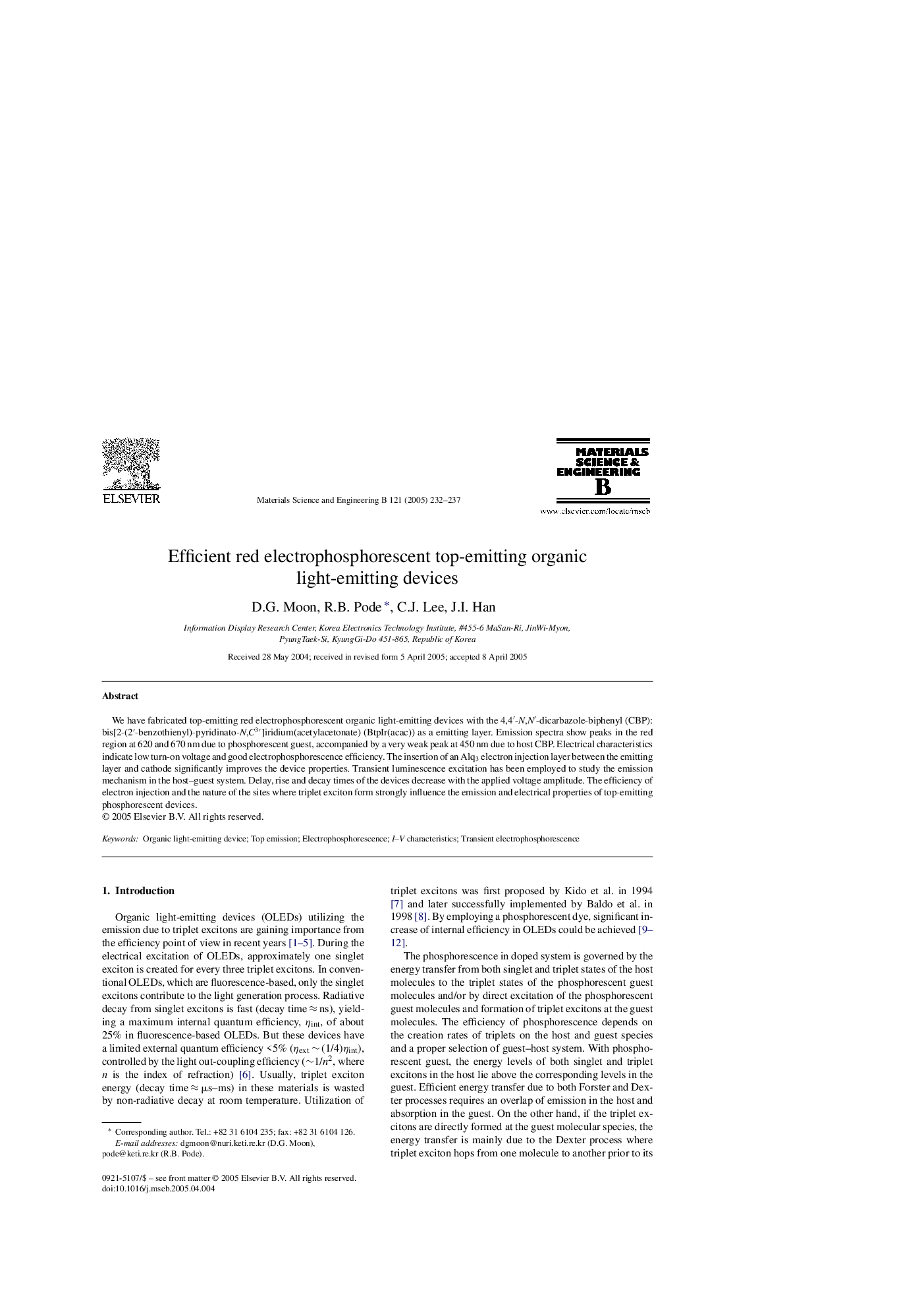| Article ID | Journal | Published Year | Pages | File Type |
|---|---|---|---|---|
| 10640037 | Materials Science and Engineering: B | 2005 | 6 Pages |
Abstract
We have fabricated top-emitting red electrophosphorescent organic light-emitting devices with the 4,4â²-N,Nâ²-dicarbazole-biphenyl (CBP): bis[2-(2â²-benzothienyl)-pyridinato-N,C3â²]iridium(acetylacetonate) (BtpIr(acac)) as a emitting layer. Emission spectra show peaks in the red region at 620 and 670Â nm due to phosphorescent guest, accompanied by a very weak peak at 450Â nm due to host CBP. Electrical characteristics indicate low turn-on voltage and good electrophosphorescence efficiency. The insertion of an Alq3 electron injection layer between the emitting layer and cathode significantly improves the device properties. Transient luminescence excitation has been employed to study the emission mechanism in the host-guest system. Delay, rise and decay times of the devices decrease with the applied voltage amplitude. The efficiency of electron injection and the nature of the sites where triplet exciton form strongly influence the emission and electrical properties of top-emitting phosphorescent devices.
Related Topics
Physical Sciences and Engineering
Materials Science
Electronic, Optical and Magnetic Materials
Authors
D.G. Moon, R.B. Pode, C.J. Lee, J.I. Han,
